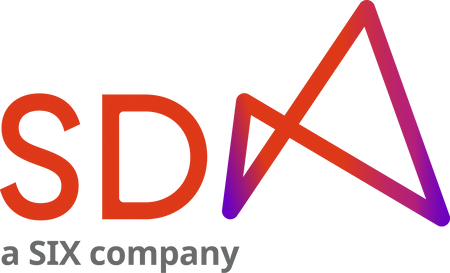On 18th November 2021, SDX announced the world’s first issuance of a digital-native bond in a fully regulated environment. We caught up with Michele to find out more about his vision for SDX’s strategy and how it will support the development of the digital asset markets of the future, and the digital market infrastructures (DMIs) that will enable them.
Hi Michele! Tell us about your role at SDX, and what’s keeping you busy at the moment?
Now that we’ve received our FINMA license, and following our digital bond issuance in November, my mandate is to focus on what’s next for SDX. As a newly authorized company, we want to focus on our regulatory capabilities, as well as the technology capabilities that we have built over the past few years. I work with our product teams to help identify new opportunities for growth and innovation based on the regulated digital asset platform that we’ve built.
In the digital market infrastructure (DMI) world, we are the providers of the platform and the regulated environment, but we can also enable other businesses to develop and grow around our platform. We can begin to look at the adjacent services that can be built around this new infrastructure, utilizing the new capabilities to which digital assets give rise. I see potential for lots of different types of solutions here, ranging from solutions for better balance sheet management to marketplaces for private assets to enhance liquidity formation.
How is SDX’s innovative technology infrastructure supporting the development of digital asset markets?
On the technology front, we’ve proved that a central securities depository (CSD) can run on DLT, on a distributed system of nodes where each node represents a member participant of the CSD. We expect to see a level of centralization and a level of decentralization, with the lever moving along this spectrum as time goes by and as the technology and regulated infrastructure mature – these are the steppingstones towards a DMI.
The more appealing benefit of our build is atomic settlement – that is, direct delivery of an asset versus instantaneous settlement of the payment leg, with settlement finality. It’s also possible to create flexibility around settlement and to set the speed of settlement so that it meets the requirements of the asset in question and specific counterparty needs. T+0 might not be an answer for every asset class, given various synchronicities required along the investment chain, but using DLT at the back-end of our CSD, we can enable this flexibility and can adapt to different market structures as we go along.
Before we can build markets in digital assets, we need issuers of digital assets. How can SDX support issuers in bringing their digital assets onto the DMI?
This is what we call the cold start problem, i.e. the need to create a digital assets infrastructure and liquidity at the same time. There are two ways of ‘creating’ digital assets. One is the tokenization of existing assets – on-boarding of assets that are transferred into our CSD and tokenized. There are specific reasons for doing this, such as cheaper issuance, or broadening the pool of liquidity to include both traditional and digital asset investors. The second involves completely digital, or digital-native, issuance, which can be done for very different reasons. You could have a digital-native issuance of a traditional asset, or a completely new one, for example, one that tokenizes assets that were historically completely locked up on balance sheets. SDX’s first listing was a mix of these two strategies.
SDX is not an issuer, we don’t issue tokens or tell people how to issue tokens. However, in building a digital asset market, we need to create an ecosystem that enables these new digital native issuances, which can then come into our CSD, and trade on our exchange.
What’s your vision for the future of digital assets and DMI?
I want to stress the importance of partnerships and of cooperation, as we build out the ecosystem and community to support the digital asset markets of the future. We are moving away from the concept of an FMI as a single jurisdictional legal entity that makes acquisitions around the globe to enable its geographical expansion. The DMI of the future will operate as a coordinated global liquidity pool. Technology will enable the bridges between jurisdictions and regulations that will underpin this transition.
We are now in the right position with our technology base, to start looking across these different liquidity pools and to partner and create ecosystems across the networks globally. We will continue to develop and grow the institutional-grade exchange and the CSD that we’ve built, and then to expand that into different asset classes and prove how our technology can work also in non-traditional FMI asset classes. Our vision is to enable clients to transact in tokenized securities in the way they know today, on institutional-grade regulated exchange and CSD infrastructure. I believe we’ve got a great shot at achieving this, and I’m excited for this journey.

